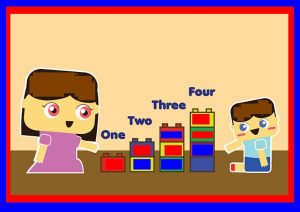- 30 years experience in the field of Special Education
How to Teach Math to Special Needs Children
Different Types of Learning Disabilities
August 20, 2014How to Teach Reading to Special Needs Children
April 6, 2015 Teaching Math to special needs children is not always easy. More often than not it’s a challenge, not only to get every child to understand the directions, but for every child to actually take that first step to figuring out a problem – sometimes they might be scared or nervous and just sit there until you walk with them every step of the way. One way to teach math to special needs children is by going tech. You have to admit it, 2015 means a lot of technology and sometimes it’s easier to embrace it rather than shrug it off. Did you know that there are actually applications that are made to help kids with special needs with math issues? Its true and while not every New Jersey special education teacher may suggest a parent to one of these apps, they may very well be the thing that changes your child’s outlook and understanding of math. It might be a super-different, new or out of box way of thinking and teaching math, but if it works – isn’t it worth a try? Here are a few apps you might want to consider when it comes to teaching your special needs kids math.
Teaching Math to special needs children is not always easy. More often than not it’s a challenge, not only to get every child to understand the directions, but for every child to actually take that first step to figuring out a problem – sometimes they might be scared or nervous and just sit there until you walk with them every step of the way. One way to teach math to special needs children is by going tech. You have to admit it, 2015 means a lot of technology and sometimes it’s easier to embrace it rather than shrug it off. Did you know that there are actually applications that are made to help kids with special needs with math issues? Its true and while not every New Jersey special education teacher may suggest a parent to one of these apps, they may very well be the thing that changes your child’s outlook and understanding of math. It might be a super-different, new or out of box way of thinking and teaching math, but if it works – isn’t it worth a try? Here are a few apps you might want to consider when it comes to teaching your special needs kids math.
Multiplication Charts HD: Used by schools across the United States! The Montessori Multiplication Charts help children with the memorization of the essential products of multiplication! In the first set of activities, children can practice individual multiplication sets, such as 4×2, 4×9, 4×5, etc., as well as, the complete chart in one activity. In these activities the solutions to the equations can be seen on the board, helping the child know which answer to search for among the scrambled numbers on the right side of the screen. In the advanced activity children can practice individual multiplication charts or the entire chart at once by finding the solutions without seeing the numbers on the board, thus, testing their memory.
Dexteria Dots 2: This new app from the award-winning Dexteria family helps kids practice their fine motor, visual tracking, and visual memory skills while learning important math concepts like greater than, less than, and equal to. Each dot has 4 attributes: numeral, pips, color, and size (e.g., a 4-dot is twice the diameter of a 2-dot). At the Beginner level, all 4 attributes are displayed as kids solve problems. As the difficulty level increases, one attribute is removed, until they reach Expert mode where they must solve problems based on size only. Each level can be played as many times as they like, resulting in wide age range appeal and endless fun.
Numerosity: Play with Addition: Aimed at 6 to 8 year olds this educational math game will help kids review concepts and improve their numerical skills whilst having fun! Did you know that addition is commutative, or that if you move one number from one side of the equal sign to the other, its sign changes? Learn Addition by playing with the numbers and discovering all these rules by yourself, at your own pace. And, at the end of the game…SURPRISE! A fabulous certificate made especially for you to send to your parents and hang on the wall!
Number Bonds: Addition & Subtraction to 99: Your students will beg to play these engaging games—racing the clock or each other, or they can “play” on their own. You don’t have to tell them that what they’re really doing is practicing number bonds (aka fact families) and developing mathematical reasoning. Use these games with a Singapore Math program or with any other math curriculum, and make math come alive for your students!
Counting Money +: Counting Money+ is an app designed to help people of all ages count money. Counting Money + contains nearly 5,000 problems to solve. There are three types of games. One game is for counting only coins, the second counts only dollars, and the third combines coins and dollars. There are two game play modes. In practice mode the user must answer the question correctly in order to proceed to the next question. The user presses the check button after each attempt to check the answer. In quiz mode the user has one opportunity to answer the question correctly. There are two difficulty types, beginner and normal.
